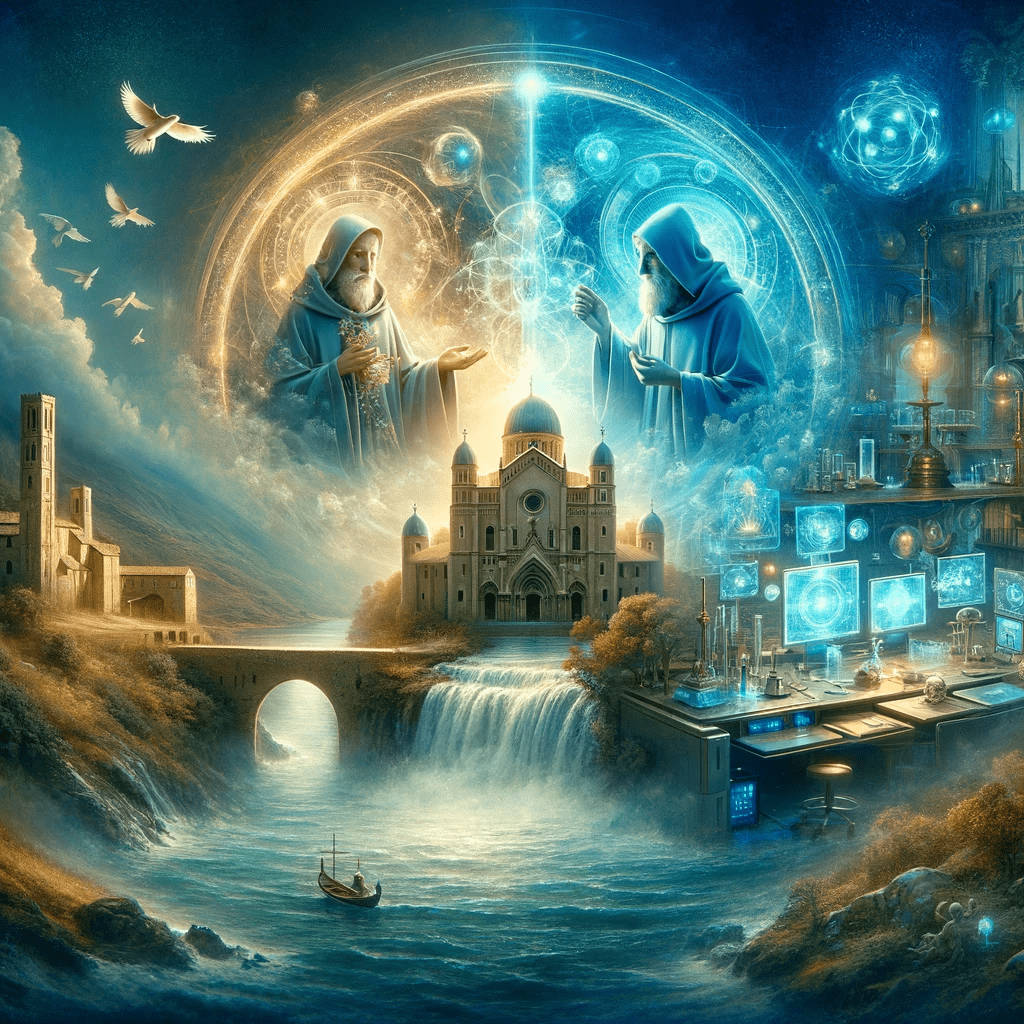Bilocation

Bilocation is a concept that traces its roots back to various historical, religious, and paranormal traditions, but has also found a place in speculative scientific discourse. To bilocate, as the term suggests, is to be in two different locations simultaneously, a phenomenon often attributed to saints, spiritual figures, and even witches in folklore. Despite its mystical origins, there is a growing interest in exploring bilocation from a more scientific perspective, primarily drawing from quantum physics and theories around multidimensional existence.
The idea of bilocation first emerged in hagiographic accounts dating back to the Middle Ages, with figures like St. Pio of Pietrelcina and St. Anthony of Padua said to have possessed this ability. It was often depicted as a divine gift, allowing these figures to perform miraculous acts or provide guidance across vast geographical expanses. The ‘where’ of these instances spanned continents, from cloisters in Italy to communities in Portugal.
The concept of bilocation has been woven into speculative discussions around the principles of quantum physics, specifically the phenomenon known as quantum superposition. According to this principle, a quantum particle can exist in multiple states simultaneously until observed or measured, at which point it collapses into a single state. Some proponents of quantum consciousness propose that if consciousness can be described using quantum mechanics, then bilocation might be scientifically possible.
A fascinating fact about quantum superposition is that it has been experimentally observed in particles like electrons and photons. In a 2013 study conducted at the University of Bonn, scientists were able to put a single particle in two places at once, observing it in a state of superposition (Science Daily, 2013). Similarly, in a 2019 study, researchers from the University of Vienna and the University of Basel demonstrated that not just tiny particles, but even larger, more complex molecules could exist in several places at once (Nature Physics, 2019). Thirdly, in a groundbreaking experiment in 2020, scientists from the University of Science and Technology of China successfully achieved quantum teleportation from a ground station to a satellite orbiting more than 1,400 kilometers above (Nature, 2020).
Quantum physicist Dr. Amit Goswami has been vocal in linking quantum superposition with the concept of bilocation. In his book “Quantum Mechanics,” he theorizes that if our consciousness is indeed operating at a quantum level, phenomena like bilocation may not be as far-fetched as they appear.
While quantum superposition is an established phenomenon, its application to human consciousness is speculative and lacks experimental evidence. Critics argue that the scales and conditions at which quantum effects occur are vastly different from those related to human existence.
There are several examples of bilocation described in historical accounts, particularly within religious texts and biographies of saints.
- St. Padre Pio: One of the most famous cases of bilocation involves St. Padre Pio, a 20th-century Capuchin priest from Italy. In the book “Padre Pio: The True Story” by C. Bernard Ruffin, numerous accounts of Padre Pio’s bilocation are documented. Witnesses claim he appeared in various locations such as hospitals, homes, and even battlefields during World War I, offering comfort and spiritual guidance.
- St. Anthony of Padua: St. Anthony is another well-documented example of bilocation within the Catholic tradition. In “Saint Anthony of Padua: The Story of His Life and Popular Devotions,” it’s recounted that while delivering a sermon in Italy, St. Anthony simultaneously appeared in Lisbon, Portugal, to testify in a murder trial, ultimately saving an innocent man’s life.
- Yogananda Paramahansa: In the field of Eastern spirituality, Yogananda Paramahansa, a revered Indian yogi and guru, is also associated with bilocation. His book “Autobiography of a Yogi” contains many miraculous accounts, including instances of bilocation by his guru, Swami Sri Yukteswar.
Experts like Dr. Raymond Moody, a well-known researcher of near-death experiences, have also written about bilocation. In his book “Paranormal: My Life in Pursuit of the Afterlife,” Moody discusses cases where people undergoing near-death experiences felt they were in two places at once.
Bilocation remains a topic of intrigue that straddles the line between science and speculation. While quantum physics provides a tantalizing hint at the possibility, definitive scientific evidence for human bilocation remains elusive.


